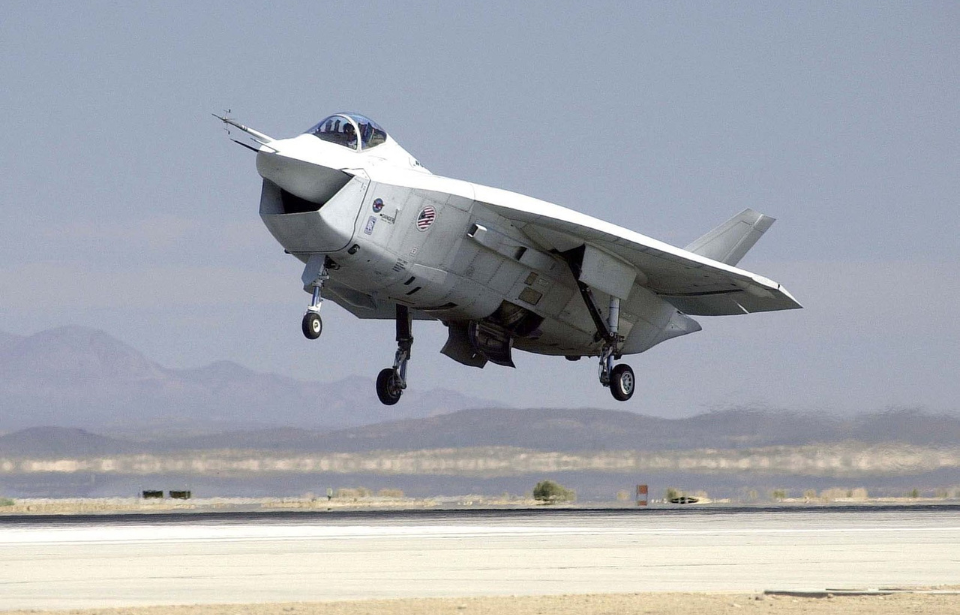Many unusual-looking aircraft have been developed over the years, but none are as ugly as the Boeing X-32. Designed as part of the Joint Strike Fighter program in the mid-1990s, the fighter ultimately lost out to a prototype submitted by Lockheed Martin, which became the famed F-35 Lightning II.
Joint Strike Fighter (JSF) program
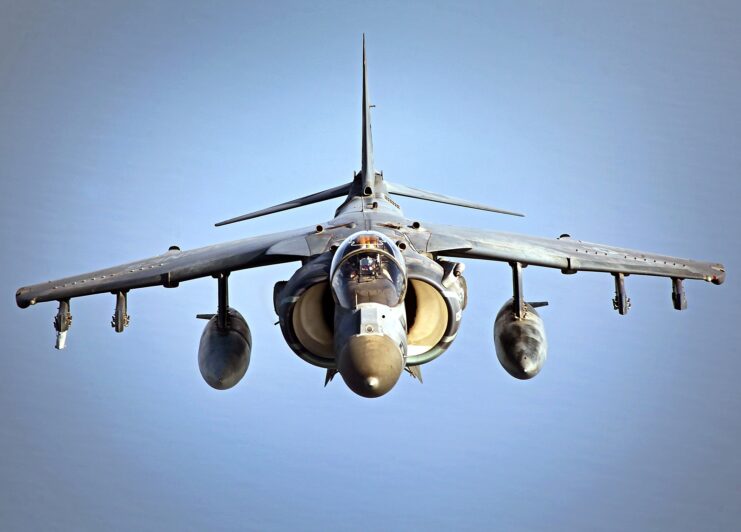
In 1994, the US Congress combined the Defense Advanced Research Projects Agency (DARPA) Common Affordable Lightweight Fighter (CALF) and the Joint Advanced Strike Technology (JAST) projects to form the Joint Strike Fighter (JSF) program, which aimed to develop a stealth aircraft to replace the US military’s aging fleet of General Dynamics F-16 Fighting Falcons, McDonnell Douglas AV-8B Harrier IIs and Boeing F/A-18 Hornets.
Several designs were submitted, with one each from Boeing and Lockheed Martin being selected to progress to the prototype phase. Both companies were awarded $750 million (some sources say $1 billion) per unit, with the understanding being that they’d produce two demonstrator aircraft that fit the following requirements:
- Ability to conduct conventional takeoffs and landings, as laid out by the US Air Force.
- Ability to conduct aircraft carrier takeoffs and landings, as per the US Navy.
- Ability to conduct short takeoff and vertical landings, as required by the US Marine Corps and British Royal Navy.
- Ground demonstrations of a production representative aircraft system.
Developing the Boeing X-32
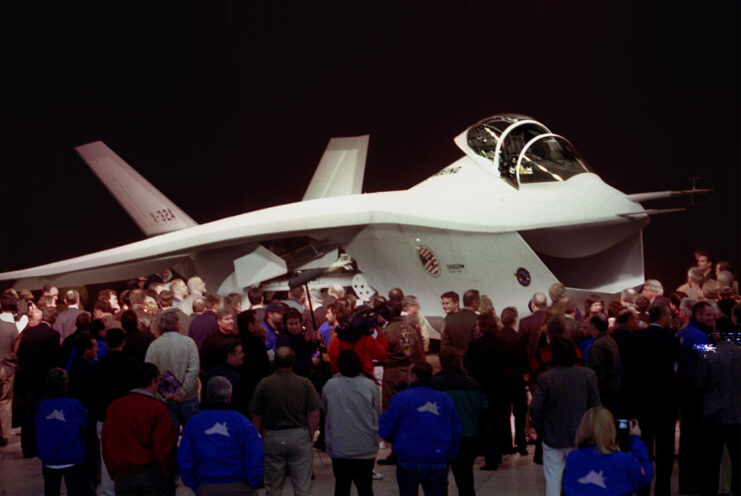
While Lockheed Martin took the less cost-effective route, Boeing took pricing into consideration when designing the X-32. This led the company to center its design around a single carbon fiber composite delta wing that spanned 9.15 meters and had a 55-degree leading edge sweep. Not only would this allow for limited transonic aerodynamic drag, but it also provided a proper angle for antenna equipment on the wing.
Keeping things low-cost, the decision was made for the X-32 to feature a thrust-vectoring “direct-lift” system, which would be ideal for the US Marine Corps’ requirement that the jet fighter be able to perform vertical landings. This, however, produced a problem with positioning the engine, requiring it to be mounted behind the cockpit and therefore moving the center of gravity.
The thrust-vectoring system also meant that the air intake portion of the aircraft had to be particularly large and mounted at the front. While necessary, it produced the risk that the X-32 would have a radar signature, which meant other avenues also needed to be explored.
Losing out to Lockheed Martin
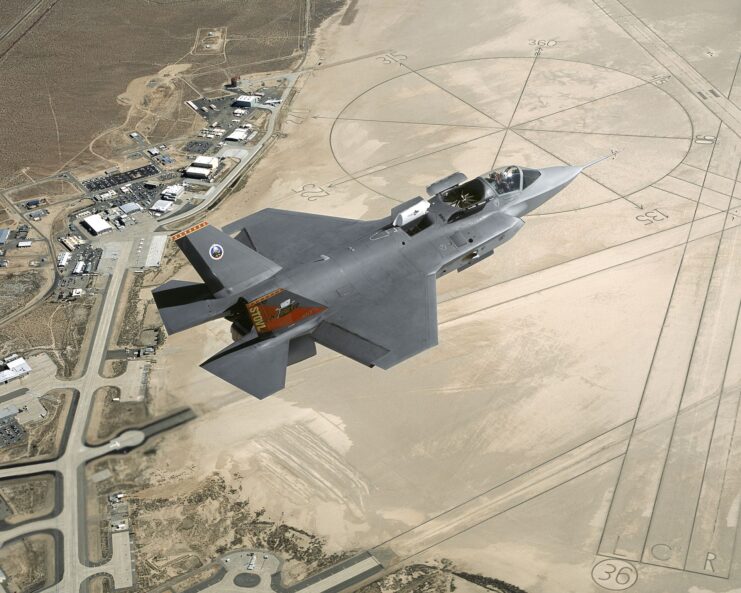
Eight months into the construction process, both Boeing and Lockheed Martin were informed the payload and maneuverability requirements had changed at the US Navy’s request. The former’s delta wing design no longer fit the bill, forcing engineers to alter the design to feature a canted twin tail that both reduced the X-32’s weight and improved its agility. Unfortunately, it was too late to alter the prototypes before they were revealed in December 1999.
The X-32A underwent taxiing tests in May 2000, followed by its first official test flight that September. However, a hydraulic leak was found, forcing the flight to be shortened by several minutes. The X-32B took to the skies in March 2001. During the trials, the former prototype flew 66 flights, while the latter did 78.
In the end, the Lockheed Martin X-35 was awarded the coveted contract, with the prototype ultimately becoming the F-35 Lightning II. While several factors played a role, the primary one had to do with Boeing’s cost-effective decision to focus on thrust-vectoring. The US military preferred the competitor’s “shaft-driven” design, despite it being unproven at the time.
Boeing X-32 specs
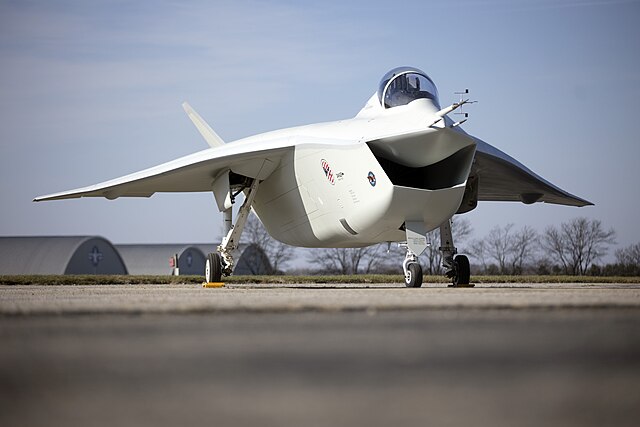
The Boeing X-32 had a rather unique design, which would have made it quite the sight in the air should it have won the contract. It had a wide body and short wingspan that spanned just 36 feet. It was operated by a single pilot, who sat in a cockpit that was at the front of the fuselage, just behind the jet fighter’s short nose assembly.
To takeoff, the X-32 was powered by a single Pratt & Whitney YF-119-PW-614 afterburning turbofan engine, with the exhaust exiting through a specially designed port at the rear of the aircraft, to reduce its radar signature. The powerplant afforded the fighter a maximum speed of 1,200 MPH at altitude, with a varied range of between 600-850 nautical miles, depending on the mission profile.
The intention was to equip the X-32 with a variety of lethal weapons. Its primary armament would have featured a 20 mm M61A2 cannon on American units and the 27 mm Mauser BK-27 cannon for export models. With two internal weapons bays, it held two 2,000-pound class-guided bombs, with six AIM-120 Advanced Medium-Range Air-to-Air Missiles (AMRAAM) also being housed internally.
Externally, the X-32 was able to carry 15,000 pounds worth of stores, ranging from auxiliary fuel tanks and missiles to guided and air-to-surface weapons.
Where did the prototypes end up?
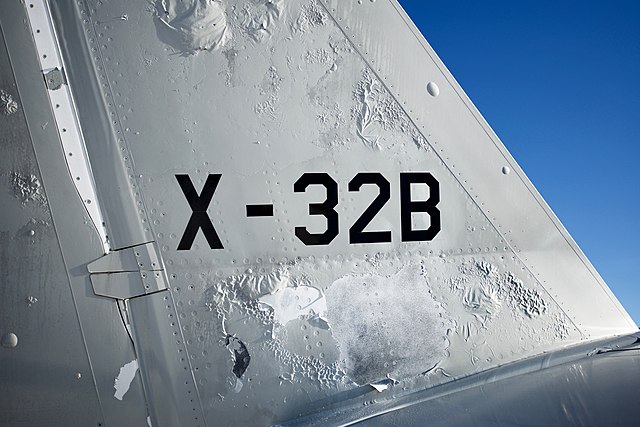
After it was decided the US military wouldn’t move forward with the X-32, both prototypes were shipped off to museums. The X-32A was sent to the National Museum of the US Air Force at Wright-Patterson Air Force Base, Ohio, where it deteriorated due to long-term exposure to the elements. While the aircraft was at risk of forever being damaged, restoration efforts were undertaken and completed in December 2023.
More from us: Bell P-63 Kingcobra: The American Fighter-Turned-Soviet Tank Buster
The X-32B was moved to the Patuxent River Naval Air Museum, located near Naval Air Station Patuxent, Maryland. While it underwent an initial restoration, it’s since deteriorated, with no mention of any plans to fix it up in the near future.
